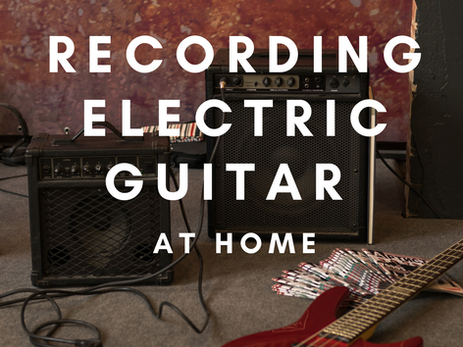music production, Uncategorized
Recording Electric Guitar at Home
Recording electric guitars were traditionally a loud and expensive task, however with advancements in guitar and recording technology, it is perfectly viable and very common to record electric guitar at home.
In this article I will discuss the different methods that can be used to achieve great sounding guitar recordings at home.

There are three main approaches to recording electric guitar, miking up an amp the traditional way, recording through an amp modeler such as the Line 6 Helix or Kemper, or recording a plain DI signal and then re-amping the signal later either using plugins or a real amp.
There are pros and cons to each approach, and some approaches will be more suitable than others for certain guitar tones and styles of music.
Approach 1:
Miking a real amp
This is the traditional way of recording electric guitars, and it still used in studios to this day.
By placing one or more microphones in front of the speaker of an amp, you can capture a wide variety of tones that can sound great on a recording.
The major downside to this approach is noise, guitar amps are very noisy and usually sound at their best when turned up louder, therefore without any soundproofing it may not be viable to record this way at home without some adjustments. There is, however, a couple of work around that can be used to capture a real guitar amp at home:
1. You can use a low watt amplifier that is a lot quieter, this way you can crank up the volume on the amp to get a good tone out of it without it being too loud.
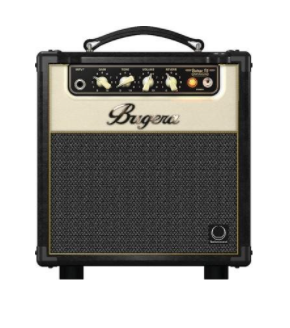
Small speaker amp
2. You can use an isobooth to reduce the noise of the amp and make it possible to record without noise complaints, this will also reduce the ‘room’ sound of a home recording, as unlike recording studios most houses don’t have acoustically treated rooms and can add an ugly resonance to the recording that will make it sound cheap and unprofessional
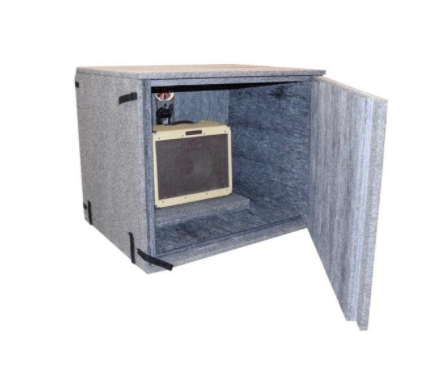
Amp in an isobooth
Approach 2:
Recording with a modeler pedal/amp
A more noise effective approach to recording electric guitar at home is to use a modeler amp or pedal.
Devices such as the Line 6 Helix and Kemper Profiling Amp have grown in popularity over recent years, as they are a lightweight, convenient ‘amp in a box’ solution, featuring dozens of digital amp models and built in effects.
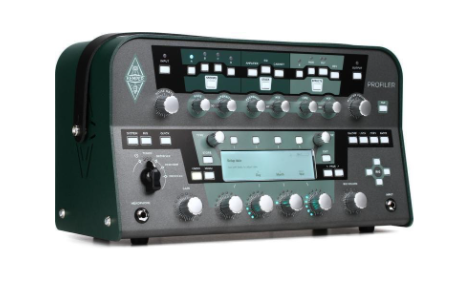
Kemper Profiler Amp
Instead of the traditional way of recording a guitar through a miked-up amp, you would plug the guitar into one of these devices and then route it into your audio interface. The benefits of this approach are many, including the ability to record at any time with headphones on to avoid any noise complaints, and having multiple tonal options built into a single device instead of only have one amp.
Approach 3:
Recording with a DI and re-amping
The final approach is to record the clean DI signal directly from your guitar into your audio interface and then re-amp the recording in post-production, this could be with a virtual amp plugin or through a real amp at a different location.
The benefits of this approach are similar to approach number 2, you get more choice with tones and can record quietly.
The downside of this approach is you don’t necessarily play with the right technique when recording, as you are playing with a dry and uninspiring tone when recording.
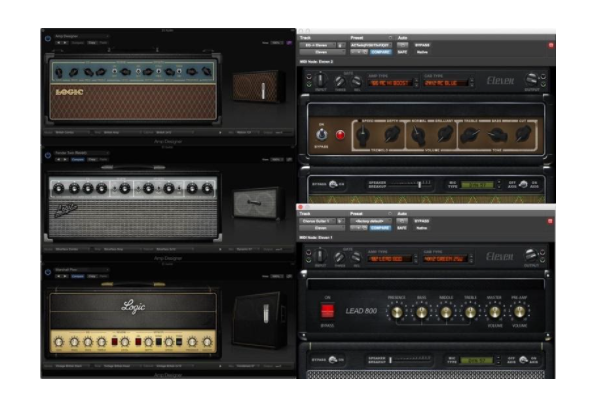
Amp sim plugins
*Using the Guitar Rig 5 Plugin instead of a real amp
In the world of modern music production, real guitar amplifiers are being used less and less, there are many reasons for this with issues of cost and noise being the main factors. In place of real amplifiers, virtual amp simulator plugins are being used instead. One of the classic amp simulator plugins that is still being used today is Native Instruments Guitar Rig 5 plugin.
The plugin offers 16 classic amp recreations from classic amps such as the Vox AC30 and the Fender Twin Reverb, in addition to several pedal effects. When using a plugin like Guitar Rig 5 instead of real amp you have the benefits of being able to audition multiple different amps with the press of a button, something that would be very expense and time consuming in the real world. You can adjust things such as the speaker cabinets, the microphone being used and its position in relation to the speaker which helps replicate a real guitar recording.
Another use of a plugin like Guitar Rig is to create otherworldly effects by chaining together multiple effects together, as there’s no limit to the amount of pedal effects that you can use, unlike in real life where you may only have two or three pedals at your disposal. Guitar Rig doesn’t have to be used for only guitar, it can also be used on any instrument including bass, vocals, drums etc… allowing some artistic freedom with timbre shifting and sound creation.
Conclusion
All three of these approaches are viable alternatives to recording electric guitars in a traditional studio and are being commonly used more and more in today’s climate.
Do not miss my article in which I go through the five essential tips for Guitar Recordings , as well as How to deal with noise when recording at home.
Thomas Rickerby
(Music production teacher WKMT)

